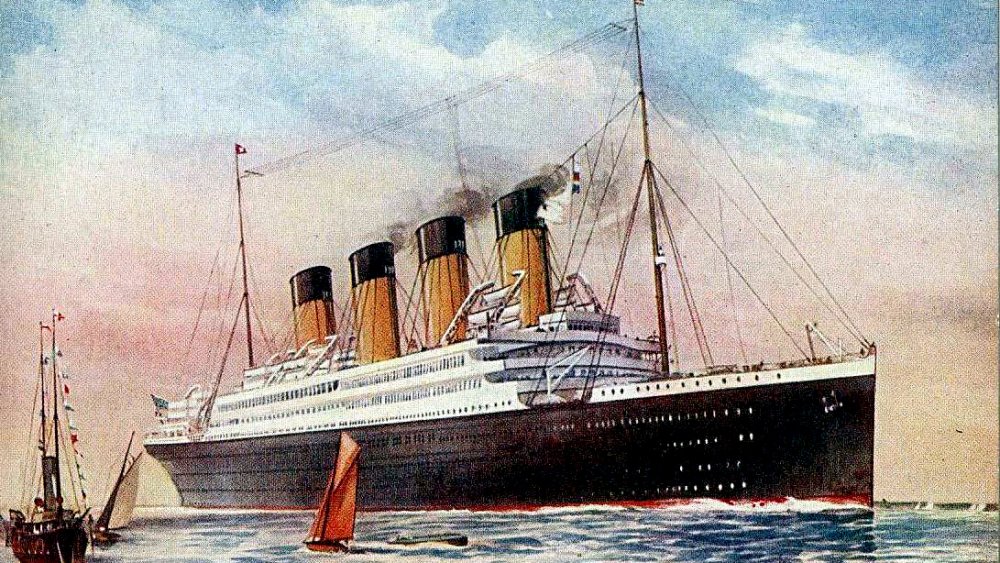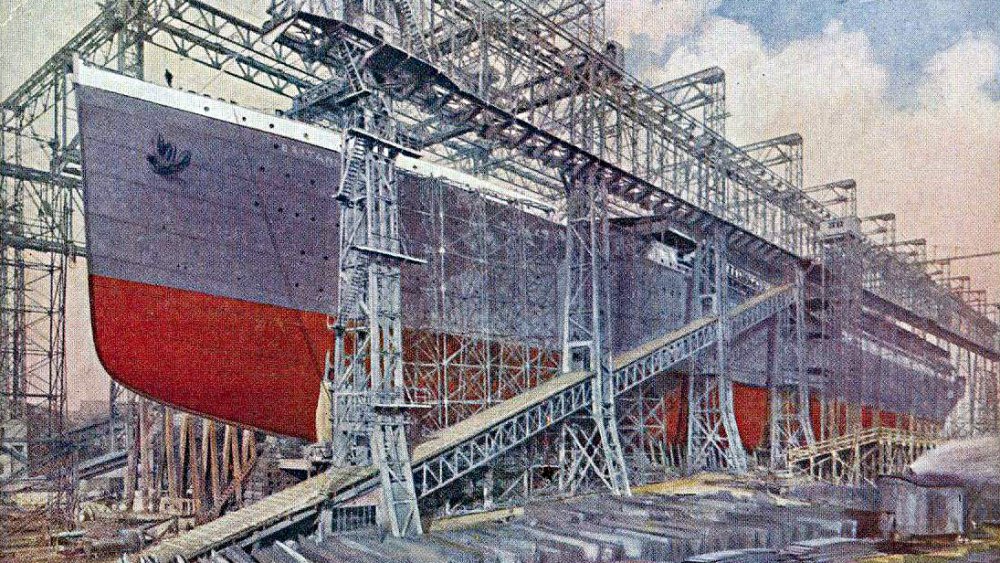The Real Reason The Titanic's Sister Ship Also Sank
In 1912, via the BBC, White Star Line vice-president Philip Franklin declared, "There is no danger that Titanic will sink. The boat is unsinkable and nothing but inconvenience will be suffered by the passengers." Given what actually happened to more than 1,500 doomed passengers, Franklin's words would go down as the height of stupid pride before the fall of the Titanic.
You might think things couldn't possibly have gotten any worse. But two years after the "unsinkable ship" totally sank, White Star Line launched another star-crossed ocean liner. The Titanic's younger sister was bigger, according to the Guardian, and oozed opulence. Initially the ship was named the Gigantic, which sounds like an iceberg's idea of a "kick me" sign. However, the name was changed to the less tone deaf-sounding Britannic. History writes that the the nearly 50,000-ton behemoth was furnished with plenty of lifeboats and, and its hull was retooled to make it better able to withstand icebergs. Even its captain, Charles Bartlett, served as a safety feature, per PBS: Nicknamed "Iceberg Charlie," Bartlett could allegedly "smell" an iceberg, and would gladly go great lengths to steer clear of them.
And, in the end, the Britannic sank anyway.
The best laid plans of mice and luxury liners
When the Britannic first took to the seas in February 1914, it was the world's largest luxury liner, according to History. But any big plans it had for the future got tossed overboard when World War I erupted. The British government converted the Britannic into a hospital ship, and the first five wartime trips went swimmingly. PBS says the vessel's surgeon, Dr. J.C.H. Beaumont, hailed the Britannic as "the most wonderful hospital ship that ever sailed the seas."
On the sixth trip, sadly, fate dealt a titanic blow to the dreamboat. It was November 1916, and the Britannic was en route to the Gulf of Athens to retrieve wounded troops when an explosion ripped through the ship. The Guardian notes that sonar scans taken in 2003 indicate that the culprit was a mine laid by a German U-boat, though some historians insist a torpedo was responsible. Whatever it was, it inflicted more damage to Britannic than the Titanic sustained from the iceberg. Captain "Iceberg Charlie" tried to run the ship aground, but because nurses had previously opened the portholes to ventilate the sick wards, water rushed into the ship.
There were ample lifeboats, but tragically, two were lowered too early, and they got sucked into the Britannic's propellers. In total, 30 people died, mostly due to the lifeboat accidents, while more than 1,000 survived. Less than an hour after the blast, the Britannic vanished into its watery grave.

